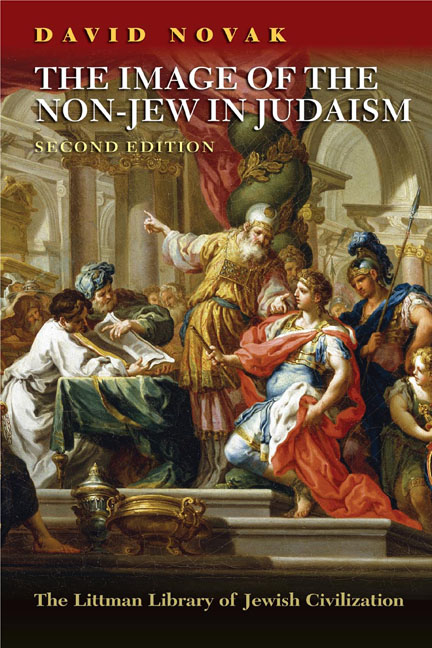Book contents
- Frontmatter
- Dedication
- Preface
- Acknowledgments
- Contents
- Chapter Summaries
- 1 The Origins of the Noahide Laws
- 2 The Law of Adjudication
- 3 The Law of Blasphemy
- 4 The Law of Idolatry
- 5 The Law of Homicide
- 6 The Law of Sexual Relations
- 7 The Law of Robbery
- 8 The Law of the Torn Limb
- 9 Aggadic Speculation
- 10 Maimonides’ Theory of Noahide Law
- 11 Albo's Theory of Noahide Law
- 12 Late Medieval Developments
- 13 Moses Mendelssohn and his School
- 14 Hermann Cohen and the Jewish Neo-Kantians
- 15 Conclusion
- Afterword
- List of Abbreviations
- Notes
- Bibliography
- Index
15 - Conclusion
- Frontmatter
- Dedication
- Preface
- Acknowledgments
- Contents
- Chapter Summaries
- 1 The Origins of the Noahide Laws
- 2 The Law of Adjudication
- 3 The Law of Blasphemy
- 4 The Law of Idolatry
- 5 The Law of Homicide
- 6 The Law of Sexual Relations
- 7 The Law of Robbery
- 8 The Law of the Torn Limb
- 9 Aggadic Speculation
- 10 Maimonides’ Theory of Noahide Law
- 11 Albo's Theory of Noahide Law
- 12 Late Medieval Developments
- 13 Moses Mendelssohn and his School
- 14 Hermann Cohen and the Jewish Neo-Kantians
- 15 Conclusion
- Afterword
- List of Abbreviations
- Notes
- Bibliography
- Index
Summary
This study has been an attempt to show how philosophy arose and developed in Judaism, that it was not a foreign element grafted onto it but was, instead, an inner need, a desire to constitute a Jewish anthropology. Humanity in general and the Noahide became synonyms.
In the past, there were attempts to limit or eliminate philosophical reflection from Jewish thought. In 1305, the rabbinate of Barcelona endeavored to ban the study of philosophy, led by Solomon ibn Adret (Rashba). Rashba argued that one devoted “to the books of the Greeks makes them the root (ikkar) and uproots (oker) the Torah of the Lord!” Such a charge, heard less today but not absent, must be answered.
If Jewish philosophy is to be a permissible Jewish activity, it must find its justification in the most evident structure of Judaism—halakhah. This was done best by Maimonides, I believe. The Talmud records the following dictum:
Rav Safra said in the name of R. Joshua b. Hananyah … that one should divide his years of study into a third of the time for Scripture, a third for Mishnah, a third for Talmud.
In codifying this prescription, Maimonides writes:
One ought to divide his study time into three parts: one third for the Written Torah, one third for the Oral tradition, and one third for understanding and comprehending a subject from beginning to end and inferring one thing from another and comparing one thing with another and understanding the principles by which the Torah is interpreted so that he knows the essence of these principles … This is what is called Gemara.
For Maimonides, Talmud or Gemara is primarily a method of inquiry, and all method is ultimately a philosophy of its subject matter. If Talmud is method, then it can be extended beyond its previous explication in a particular body of literature, for method is necessarily less explicit than data. This understanding of Talmud as method in the deepest sense is the greatest Jewish justification of philosophical reflection I know. As a method of inquiry, rather than a competing source of wisdom, it at all times respects the independent integrity of the object of its concern.
- Type
- Chapter
- Information
- The Image of the Non-Jew in JudaismThe Idea of Noahide Law, pp. 225 - 230Publisher: Liverpool University PressPrint publication year: 2011



